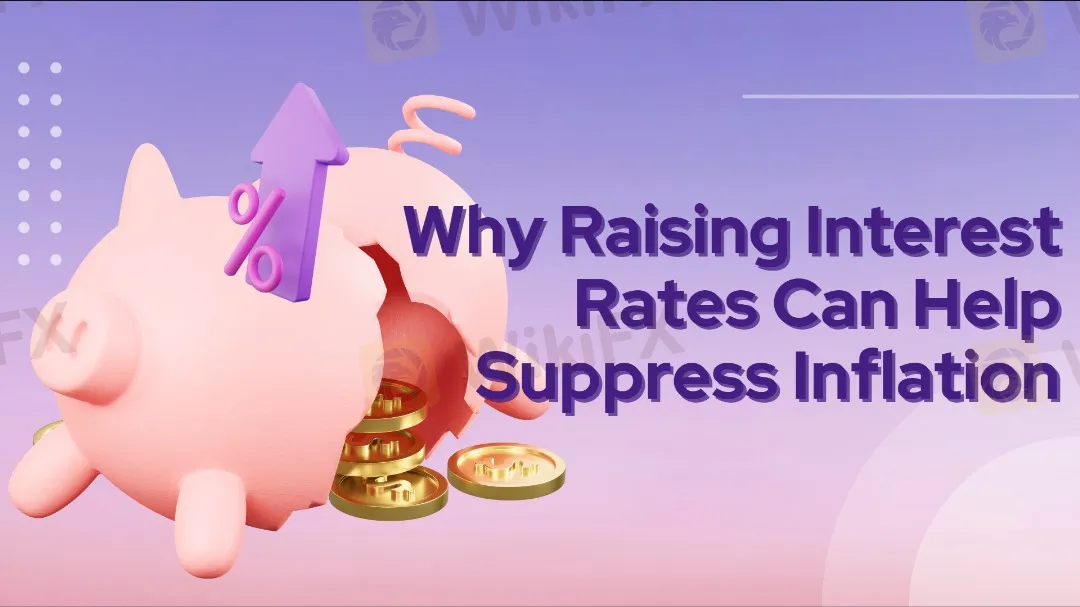简体中文
繁體中文
English
Pусский
日本語
ภาษาไทย
Tiếng Việt
Bahasa Indonesia
Español
हिन्दी
Filippiiniläinen
Français
Deutsch
Português
Türkçe
한국어
العربية
Why Raising Interest Rates Can Help Suppress Inflation?
Abstract:Over the past significant period, the United States has consistently implemented interest rate hikes with the aim of curbing inflation. Throughout this process, although the inflation data in the United States did not decrease rapidly, there was, at the very least, a containment of the upward trend. So, why does raising interest rates help control inflation?

Over the past considerable period, the United States has been consistently raising interest rates with the aim of curbing inflation. Throughout this process, it can be observed that, although inflation data in the United States did not decrease rapidly, at least the upward momentum was contained.
So, why can raising interest rates curb inflation? Let's briefly discuss this today:
How does inflation occur?
The fundamental reason why inflation occurs is that there is too much money supply, which is what is called “flooding the market with money”! Money represents purchasing power. When the money supply increases, the purchasing power of the whole society rises, consumption and investment increase, and price hikes become inevitable. At the same time as consumption demand increases, it will also stimulate producers of goods to increase investment in order to expand production capacity, thus leading to an increase in demand for raw materials and causing prices of raw materials to rise. This in turn drives up production costs of goods.
Ultimately, this forms inflation!

One of the purposes of interest rate hikes: Curbing consumption and investment!
After interest rate hikes, consumption can be restrained in two aspects:
Having money in the bank to earn higher interest will curb the desire for consumption.
Higher interest costs on borrowing for investing or consumption.
As long as consumption and investment are curbed, inflation can then also come down.
Second purpose of interest rate hikes: Appreciating domestic currency
After interest rate hikes, it pushes the appreciation of domestic currency against foreign currencies, enhancing the purchasing power of domestic currency on imported goods.
With the lowered costs of goods imported from foreign countries, the sales prices of these goods domestically can also come down, thereby driving down overall inflation levels.
Therefore, interest rate hikes whether externally or internally, are helpful in curbing inflation.
Interest rate hikes can curb consumption and investment, thereby resisting inflation;
Interest rate hikes can increase purchasing power of imported goods, thereby resisting inflation.

Disclaimer:
The views in this article only represent the author's personal views, and do not constitute investment advice on this platform. This platform does not guarantee the accuracy, completeness and timeliness of the information in the article, and will not be liable for any loss caused by the use of or reliance on the information in the article.
Read more

Navigating the Intersection of Forex Markets, AI Technology, and Fintech
The financial world is transforming, driven by the rapid integration of artificial intelligence (AI) and innovative fintech solutions. This change is most apparent in forex markets, where algorithmic trading and deep learning are redefining strategies, risk management, and decision-making. In this article, we explore how AI-driven technologies are not only revolutionizing forex trading but are also propelling fintech innovations that enhance customer experiences, bolster security, and unlock new market opportunities.

The One Fear That’s Costing You More Than Just Profits
The fear of missing out (FOMO) is NOT what you think it is! Read the three lesser-discussed components that contribute greatly to FOMO trading!

Why More People Are Trading Online Today?
Discover why online trading is booming with tech, AI, and a push for financial freedom. From stocks to crypto, it’s a thrilling hustle for all.

Bitpanda Secures Full Broker-Dealer License in Dubai
Bitpanda has officially obtained a full broker-dealer license from the Dubai Virtual Assets Regulatory Authority (VARA), marking a significant milestone in its international expansion. This approval, which follows preliminary authorization granted three months earlier, enables the European digital asset exchange to introduce its comprehensive suite of virtual asset services to investors in the United Arab Emirates (UAE).
WikiFX Broker
Latest News
Why Are Financial Firms Adopting Stablecoins to Enhance Services and Stability?
Experienced Forex Traders Usually Do This Before Making a Lot of Money
Octa vs XM:Face-Off: A Detailed Comparison
When High Returns Go Wrong: How a Finance Manager Lost RM364,000
Bridging Trust, Exploring Best—WikiEXPO Hong Kong 2025 Wraps Up Spectacularly
Fidelity Investments Explores Stablecoin Innovation in Digital Assets Sector
Interactive Brokers Expands Crypto Trading with Solana, XRP, Cardano, and Dogecoin
SEC Ends Crypto.com Probe, No Action Taken by Regulator
Why More People Are Trading Online Today?
Broker Comparison: FXTM vs XM
Currency Calculator







